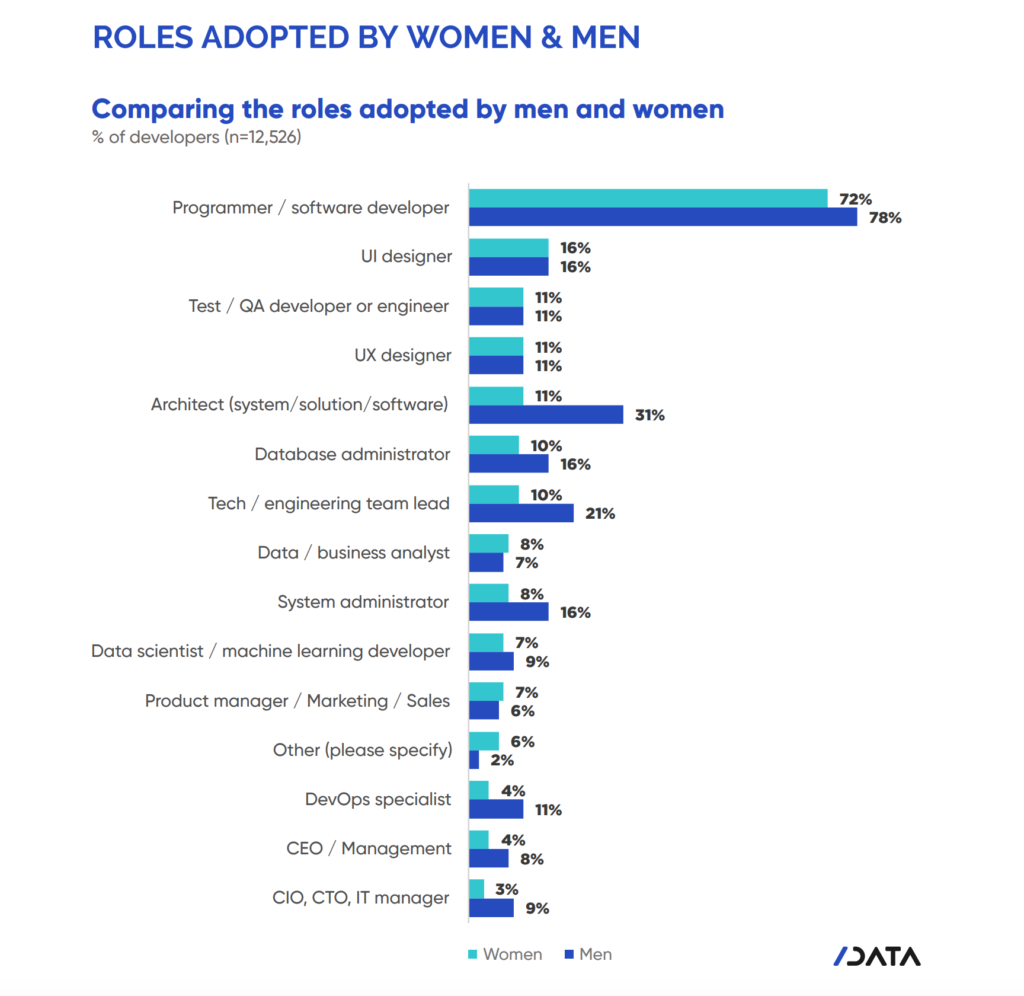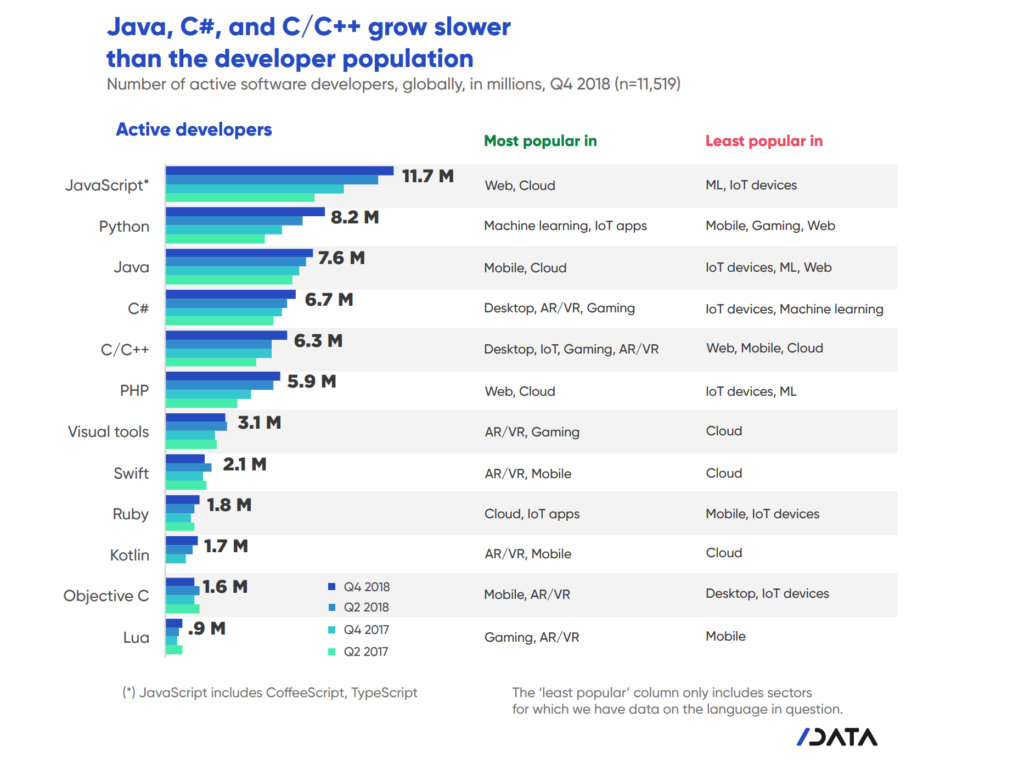This article was created in partnership with the Developer Economics Survey. Thank you for supporting the partners who make SitePoint possible. Looking to partner with SitePoint? Get more information here.
The latest Developer Economics survey is upon us again, and as always, we highly recommend that everyone participates. It’s an excellent opportunity to express your views about what’s happening in the world of web development, and it helps paint a cohesive picture about the landscape.
In the last survey, published April 2019, we garnered a lot of interesting insights into the modern dev at work. Of the participants in the last survey, 9% were women, suggesting a global population of 1.7 million women developers versus the 17 million that are men. However, the report also found that under the age of 35, 36% of developers were women, versus 33% of men. Compare this with the survey’s other finding that 37% of male developers are over 35 years of age, as compared to 29% of women in the same age bracket. This indicates that younger generations of women are increasingly moving towards a career in development. Hopefully in the next few years we’ll start seeing parity between male and female developers in more senior roles. Currently men are almost three times more likely to hold senior or C-suite positions than women.
However, as the report also notes, a less optimistic reading of the data may be that women “have always been involved, but tend to leave software development as they get older, either by choice or necessity.”

Another interesting, but ultimately unsurprising finding from the April survey was that the most popular way working devs learnt their craft was via self-learning methods, despite the spike in formal educational courses on the subject. This bodes well with the pop culture image of the tech wunderkind that learnt to be a “computer whisperer” all by himself or herself. Though this is a popular and admittedly cool image of the industry, the reality is that a majority of working devs still relied heavily on online course materials to learn and due to the industry’s constantly changing nature, also “engaged in continuous education throughout their [long] careers” to stay up-to-date and remain relevant.
This trend is actually consistent with our own findings here at SitePoint. A recent survey of our SitePoint Premium members showed that jobs and employment is the main reason developers join a learning platform like ours, to keep up-to-date with the latest languages and platforms. While job security is not marked as a major concern with users, career progression and ensuring they remained relevant and competitive to land the next gig was.
So which programming language should you learn to stay in the game? As recent as April 2019, the survey found that JavaScript was still the most widely used programming language, with a community of 11.7M developers. With 8.2M active developers Python has surged in popularity surpassing Java, but is still the bridesmaid to the bride that is JavaScript… for now anyways.

Angela was the Head of Content and Production at SitePoint. When not trying to build a new workflow process, she was also an editor and writer. The correct use of a semi-colon is a big thing for her.




